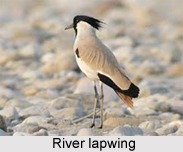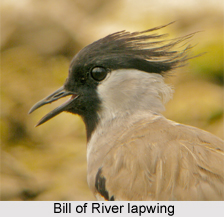 River Lapwing is an Indian Bird that bears a scientific name "Vanellus duvaucelii" considered as the con-specific and closely related with the spur winged lapwing of Africa. River Lapwing generally occurs at low densities throughout most of its range, and there are several threats that are thought to be driving at least regional or local declines, but the population of River lapwing is expected to go into overall decline as impacts intensify and become more widespread.
River Lapwing is an Indian Bird that bears a scientific name "Vanellus duvaucelii" considered as the con-specific and closely related with the spur winged lapwing of Africa. River Lapwing generally occurs at low densities throughout most of its range, and there are several threats that are thought to be driving at least regional or local declines, but the population of River lapwing is expected to go into overall decline as impacts intensify and become more widespread.
Population of River Lapwing
The population of River Lapwing is estimated to number 1,000-25,000 individuals, roughly equating to 670-17,000 mature individuals.
Breeding of River Lapwing
River lapwing is a lapwing species which breeds from the Indian Subcontinent eastwards to Southeast Asia. The breeding display, given on the ground, includes stooping, spinning, stretching and crest-raising.
Concentration of River Lapwing
River Lapwing range includes much of northern and north-eastern Indian States, stretching towards Myanmar to Cambodia, Thailand and Vietnam. It appears to be entirely sedentary. This species resembles the closely related spur-winged lapwing of Africa, and has sometimes been considered conspecific. The species name commemorates Alfred Duvaucel.
Structure of River Lapwing
River Lapwing is 29 to 32 cm long. River Lapwing has a black crest, crown, face and central throat and grey-white neck sides and nape. It has a grey-brown breast band and white under parts with a black belly patch. The back is brown, the rump is white and the tail is black. This is a striking species in flight, with black primaries, white under wings and upper wing secondaries and brown upper wing coverts.
Sexes of River Lapwing
The adult River Lapwings of both sexes are similarly plumaged, but males are slightly larger than females. Young birds have the brown tip to the black head feathers, a sandier brown back, and pale fringes to the upperparts and wing covert feathers. The call of the river lapwing is a sharp tip-tip or did-did-did.
Nests of River Lapwing
River Lapwing nests on shingle and sand banks from March to June. It lays two eggs on a ground scrape. It feeds on insects, worms crustaceans and molluscs in nearby wet grassland and farmland. It is not gregarious.



















